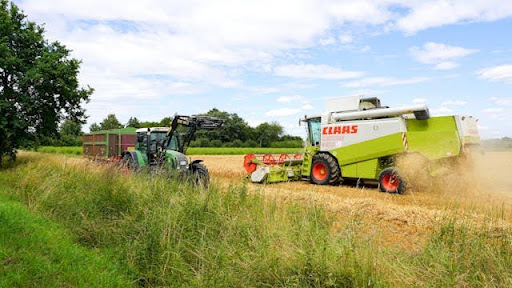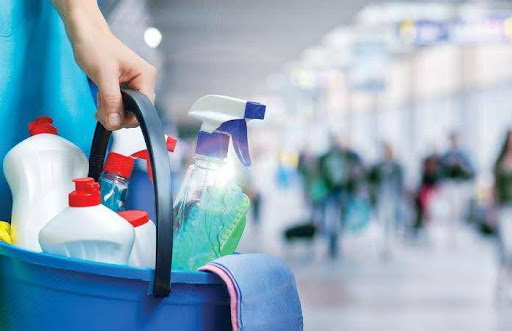Renting heavy equipment is a cost-effective way to complete projects without the financial burden of ownership. From construction to landscaping, equipment rentals allow you to access powerful machines when you need them most.
However, heavy equipment can be dangerous if not used properly. Following essential safety practices ensures not only your own protection but also the safety of your team and surrounding environment.
Below are crucial safety tips to follow whenever you use heavy equipment rentals.
1. Choose the Right Rental Company
The first step toward safety is selecting a trusted rental provider. Well-maintained equipment lowers the chances of breakdowns and accidents. A reputable company will regularly service its fleet and provide guidance on proper usage.
For example, https://www.rentcoequipment.com/ is one such resource that emphasizes both quality equipment and customer support. Selecting the right rental partner sets the foundation for safe operations.
2. Inspect Equipment Before Operation
Before operating any rented machine, always perform a thorough inspection.
Look for:
- Fluid leaks, cracked hoses, or worn-out belts.
- Tire condition and proper inflation.
- Operational warning lights and alarms.
- Securely fastened parts and attachments.
Even minor issues can escalate quickly when dealing with heavy machinery. A quick pre-use inspection can prevent larger problems later.
3. Read the Operator’s Manual
Every machine comes with an operator’s manual, and it should never be ignored.
Manuals provide details such as:
- Safe load limits and lifting capacities.
- Proper operating techniques.
- Emergency shutoff procedures.
Even if you’ve used similar equipment before, each model has unique features. Taking a few minutes to review the manual reduces mistakes and accidents.
4. Ensure Proper Training
Only trained and certified operators should handle heavy equipment. Training not only covers the basics of operation but also teaches how to react in emergency situations. If you lack training, ask the rental company for recommendations or consider hiring a qualified operator for complex projects.
5. Always Wear Protective Gear
Personal Protective Equipment (PPE) is a must when working around heavy equipment.
Essential items include:
- Hard hat for head protection.
- Steel-toed boots for foot safety.
- Reflective vest for visibility.
- Safety goggles and gloves.
- Hearing protection if working around noisy machines.
The right gear minimizes injury risks in case of accidents.
6. Be Aware of Your Surroundings
Situational awareness is key. Before starting, examine your worksite for:
- Overhead power lines and underground utilities.
- Uneven or unstable ground.
- Other workers, vehicles, or pedestrians.
Using a spotter is highly recommended when operating in tight spaces or crowded areas.
7. Operate Within Equipment Limits
Each machine is designed for specific tasks. Never overload or misuse it. Overloading can cause rollovers, while using equipment for the wrong purpose can damage both the machine and your project. Respect the manufacturer’s safety limits at all times.
8. Secure Equipment When Idle
Heavy equipment should never be left unsecured.
When not in use:
- Lower attachments to the ground.
- Engage the parking brake.
- Shut off the engine and remove the key.
- Park on flat, stable terrain.
This prevents accidental movement and ensures no one uses the equipment without authorization.
9. Follow Safety Regulations
Compliance with local and national safety regulations is non-negotiable. These rules are designed to keep workers safe. Make sure your team understands workplace standards, keeps documentation updated, and adheres to site-specific requirements.
10. Enter and Exit Safely
Many injuries happen when climbing in or out of machines. Always use three points of contact—two hands and one foot or two feet and one hand. Avoid jumping down from equipment and use designated steps or handholds.
11. Encourage a Safety Culture
Safety is a collective effort. Hold regular training sessions, encourage workers to report hazards, and make safety discussions part of daily operations. When everyone takes responsibility, risks decrease dramatically.
12. Avoid Fatigue
Fatigue reduces focus and increases mistakes.
Operators should:
- Take scheduled breaks.
- Stay hydrated throughout the day.
- Avoid operating machinery when overly tired or unwell.
Rested operators make better, safer decisions.
13. Maintain Equipment During Rental Period
Even though the equipment isn’t yours, caring for it is part of your responsibility. Clean off debris, refuel when needed, and report any unusual performance issues to the rental company immediately. This keeps operations safe and avoids costly delays.
Quick Safety Checklist
| Step | Action |
| 1 | Choose a trusted rental provider |
| 2 | Inspect machinery before use |
| 3 | Read and follow the operator’s manual |
| 4 | Allow only trained operators |
| 5 | Wear protective gear |
| 6 | Check surroundings for hazards |
| 7 | Operate within equipment limits |
| 8 | Shut down and secure equipment properly |
| 9 | Follow regulations and guidelines |
| 10 | Enter/exit with three points of contact |
| 11 | Promote safety-first culture |
| 12 | Take breaks and avoid fatigue |
| 13 | Maintain and report equipment issues |
Final Thoughts
Heavy equipment rentals are powerful tools for completing projects efficiently, but they require responsible handling. By inspecting equipment, wearing protective gear, following regulations, and staying alert, you can prevent accidents and ensure successful project completion.
Remember: one small safety step today can prevent a major accident tomorrow. Always treat rented machinery with the same caution as you would your own. Safe practices protect not just you, but everyone working around you.









